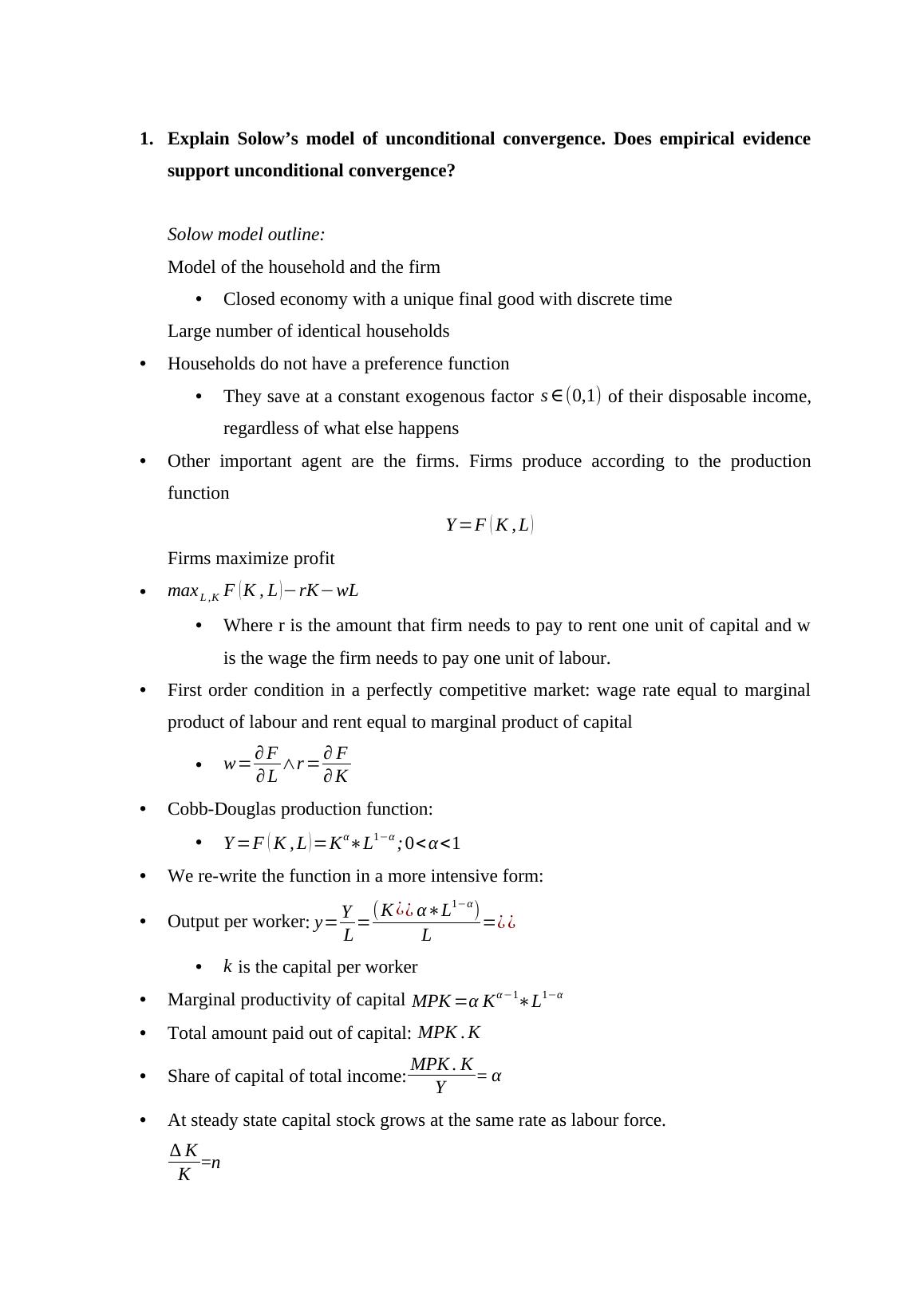Solow’s Model of Unconditional Convergence
7 Pages1645 Words88 Views
Added on 2022-12-15
About This Document
This article explains Solow’s model of unconditional convergence and examines the empirical evidence supporting it. The model predicts that economies with the same relative technological development, savings, population growth, and depreciation will end up in the same steady state in the long run. The article also discusses the concept of unconditional convergence and its implications.
Solow’s Model of Unconditional Convergence
Added on 2022-12-15
ShareRelated Documents
End of preview
Want to access all the pages? Upload your documents or become a member.
Intermediate Macroeconomic : Assignment
|14
|2258
|256
Economic Growth and Stability: Theory and Evidence
|11
|2417
|381
IS-LM Model Investment Demand Function Shift, Labor and Investment, Tobin Q
|3
|666
|197
ECO2543 - Theorie Macroeconomics
|12
|1771
|11
Critically evaluate the Neo-classical-theory of economic growth and discuss whether foreign aid causes growth in the economy in case of developing countries
|15
|3166
|262
Advanced Macroeconomics Study Material
|10
|1443
|94



